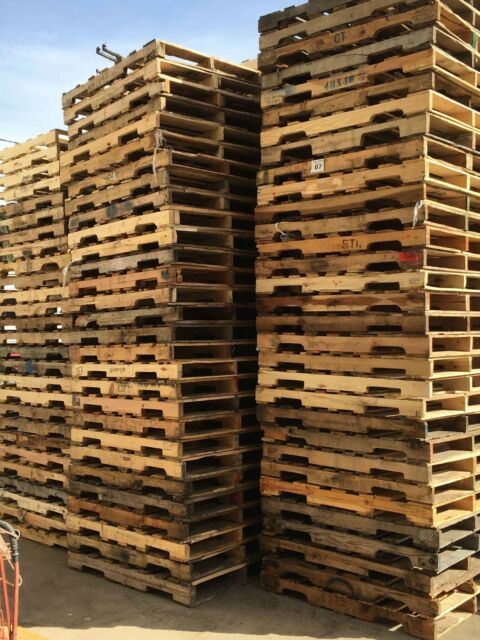Wood Pallets 101

The Pallet Industry
“Pallets Move the World” is the motto of the National Wood & Pallet Container Association and it is most definitely true. Wood pallets are widely used in the supply chain and can be found in nearly every type of logistics operation , whether it be packaging, transportation, warehousing, crossdocking, pick/pack, etc. The use of wood pallets has revolutionized the supply chain and has increased efficiency in logistics by orders of magnitude. In the United States today, wood pallets are a $12 billion dollar industry that is a critical part of the infrastructure that keeps the US economy functioning even in the midst of a global pandemic.
Wood Pallet Companies
In North America, wooden pallets are produced and recycled by an army of companies (3000+) spread across the continent. Most often, these are family owned businesses that are now reaching the 3rd-4th generation. The companies can range in size from 2 people in a garage, to companies with hundreds of employees based across multiple geographic regions, to global corporations with thousands of employees.
Pallet brokers are companies that typically don’t own any assets (like pallet yards), but are able to tap into this industry ecosystem to service clients with diverse manufacturing or production operations across the country or globe.
The Wood Pallet
New Pallets
Pallets are generally inexpensive to manufacture. The raw material used is the byproduct of wood that is left over after the high grade material goes to veneer, furniture, and paper among others.
Typically, they are constructed using softwood or hardwood depending on availability of pallet lumber in the specific regional market. New pallets are generally built by machine as it allows for much more efficiency in production vs being built by hand. Here is an example of a pallet building machine at work:
Recycled Pallets
Wood pallets are very often rebuilt and recycled multiple times before the end of their life cycle. This makes them the most sustainable and reusable link in the supply chain. The video below is a great view of what takes place when a recycled pallet is repaired.
Pallet Supply and Flow
Wood pallets tend to move through the supply chain and stay within a particular region. For example, a beverage manufacturer palletizes their product on a standard 48×40 pallet. Those pallets (unit loads) are loaded into a truck and that truck then hauls the load to a beverage distributor 125 miles away. The beverage distributor may break down the unit load to put them on another smaller vehicle for delivery or move the full pallet to a nearby grocery store chain.
Eventually, the pallet is emptied and then it is resold, repaired if needed, and re-used in the local supply chain. This process happens repeatedly, with some slight variation on the type of load transported, thousands of times a day.
Over time, this regional pallet pool will decline in quality because the pallets have been repaired many times. At the end of their utility, pallets have a number of options for recycling. They can be ground into mulch, made into animal bedding, or repurposed into creative projects. The important point is that they are recycled throughout their entire life cycle all the way to the end. in fact, wooden pallets and containers are recycled 95% of the time and are an important part of any company’s sustainability effort.











